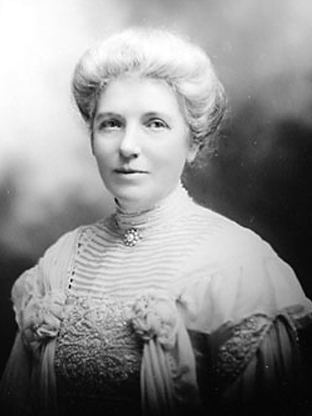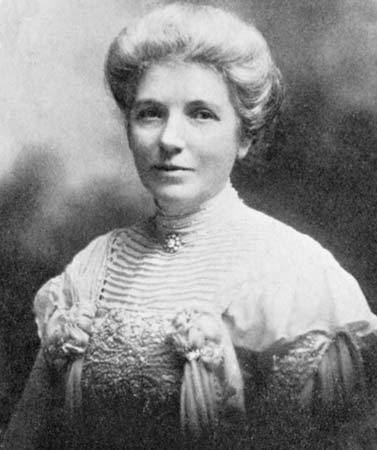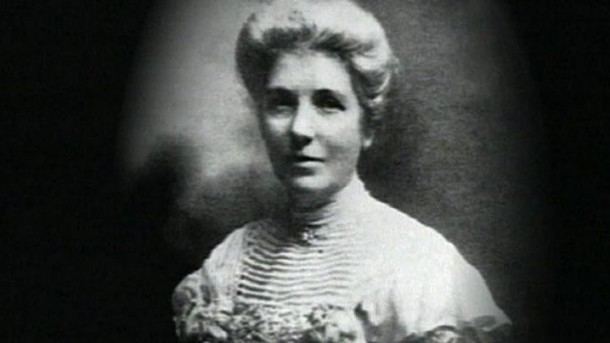Name Kate Sheppard | ||
 | ||
Full Name Catherine Wilson Malcolm Other names Katherine Wilson Malcolm Children Douglas Sheppard (b. 1880) Spouse William Sidney Lovell-Smith (m. 1925–1929), Walter Sheppard (m. 1915–1915) Similar People Apirana Ngata, Jean Batten, Whina Cooper, Edmund Hillary, Peter Blake | ||
Kate sheppard biography by grace
Katherine Wilson "Kate" Sheppard (née Malcolm, 10 March 1847 – 13 July 1934) was the most prominent member of the New Zealand's women's suffrage movement and was the country's most famous suffragette. Since New Zealand was the first country to introduce universal suffrage in 1893, Sheppard's work has had a considerable impact on women's suffrage movements in several other countries. She also appears on the New Zealand ten-dollar note.
Contents
- Kate sheppard biography by grace
- Kate sheppard covering the evolving environment and reproductive rights beat
- Early life
- Womens suffrage movement
- National Council of Women
- Later life
- Commemoration
- References

Kate sheppard covering the evolving environment and reproductive rights beat
Early life

Kate Sheppard was born Catherine Wilson Malcolm in Liverpool, England to Scottish parents Jemima Crawford Souter and Andrew Wilson Malcolm. Her father was born in 1819 in Scotland, and worked as a lawyer and banker. He married Souter in the Hebrides on 14 July 1842. Catherine was the second or third of five children. Her father's work saw the family moved frequently as he travelled Scotland settling disputes. Details of the children's education are unknown, although they clearly were well educated. Andrew's love of music ensured that the family had good musical training. He died in 1862, leaving his widow with sufficient means but not rich.

Catherine was named after her paternal grandmother, but she generally preferred to spell her given name "Katherine", or abbreviate it to "Kate". She was noted for her intellectual ability and broad knowledge. After her father's death, she lived with her uncle, a minister of the Free Church of Scotland at Nairn, and it was he who most instilled in her the values of Christian socialism. At the time the rest of the family stayed with relatives in Dublin, where Kate later joined them.
George Beath, the partner of Kate's sister Marie, emigrated to Melbourne in 1863. He later moved to Christchurch where Marie joined him. They were married in 1867 and had their first child the following year. Marie's accounts of Christchurch motivated Jemima to move her family to New Zealand, seeking better prospects for her sons' employment and wanting to see her granddaughter. They sailed on Motoaka from Gravesend on 12 November 1868, arriving in Lyttelton Harbour on 8 February 1869.

In Christchurch, most of the family including Kate joined the Trinity Congregational Church. The minister was Reverend William Habens, a London University graduate, who was also Classics Master at Christchurch High School at the time. Kate became part of Christchurch's intellectual and social scenes, and spent time with Marie and George's growing family.

Walter Allen Sheppard was a local shopkeeper, and knowledgeable about local matters, having been elected to the Christchurch City Council in 1868. He and Kate were married at her mother's house on 21 July 1871. They lived on Madras Street, not far from her mother's, and within walking distance of the city centre. The Trinity Congregational Church raised funds for a new building from 1872 to 1874, and Kate was most likely involved in this. She formed a friendship with Alfred Saunders, a politician and temperance activist who may have influenced her ideas on women's suffrage. In 1877–78, Kate and Walter spent a year in England, then returned to Christchurch. Their only child, Douglas, was born on 8 December 1880.
In 1884, Kate, who had been teaching Sunday school for the church, was elected secretary of the newly formed Trinity Ladies' Association, a body set up to visit parishioners who did not regularly attend church services, fundraise, and do jobs for the church such as providing morning tea. She wrote reports on the work of the Association, and tried to recruit new members to it and retain existing ones. The following year, she joined the Riccarton Choral Society. Her solo in a May 1886 concert was praised in the Lyttelton Times. She also joined the management committee of the YWCA.
Women's suffrage movement
In 1885, Mary Leavitt from the Woman's Christian Temperance Union (WCTU) of the United States toured New Zealand speaking not only about the problems caused by alcohol consumption, but also the need for women to have a "voice in public affairs". She spent two weeks in Christchurch, starting with a public speech at the Theatre Royal on 10 May. Sheppard became involved in establishing a New Zealand branch of the WCTU, part of the larger temperance movement. Her initial involvement was promoting petitions to Parliament to prevent women being employed as barmaids, and to outlaw the sale of alcohol to children. These petitions were rejected by the Petitions Committee of Parliament. Sheppard decided that as petitions could be ineffective, women's franchise was necessary.
The New Zealand Women's Christian Temperance Union was formed at a conference in Wellington in February 1886. Sheppard wasn't at that conference, but at the second national convention in Christchurch a year later, she came ready to present a paper on women's suffrage, although there was no opportunity for her to present it. She was appointed National Superintendent for the Franchise and Legislation.
The Temperance Union believed that much of the support for moderation came from women, and that therefore with women's suffrage they could advance their aim to prohibit alcohol as well as other issues of child and family welfare. Sheppard quickly became prominent in the area of women's suffrage, but her interest in the cause went beyond practical considerations regarding temperance: her views were made well known with her statement that "all that separates, whether of race, class, creed, or sex, is inhuman, and must be overcome." Sheppard proved to be a powerful speaker and a skilled organiser, and quickly built support for her cause.
The WCTU sent a deputation to Sir Julius Vogel asking him to introduce a suffrage bill to parliament. He did so in 1887, with the Female Suffrage Bill and Sheppard campaigned for its support. In its third reading, the part dealing with women's suffrage was defeated by one vote, and the bill was withdrawn.
During the general election campaign at the end of the year, Sheppard encouraged members of the WCTU to ask candidates questions about suffrage, but few women did so. In 1888, Sheppard was President of the Christchurch branch of the WCTU, and presented a report to the national convention in Dunedin. The convention decided that prohibition and women's suffrage were the keynotes for the WCTU. Sheppard made public speeches on suffrage in Dunedin, Oamaru and Christchurch and developed a confident speaking style. To reinforce her message, she gave audiences leaflets produced in Britain and the United States. In 1888, Sheppard published her own single-sheet pamphlet entitled Ten Reasons Why the Women of New Zealand Should Vote which set out why women should be entitled to vote and also displayed her "dry wit and logical approach." A copy was sent to every member of the House of Representatives.
The government introduced an Electoral Bill in 1888, which continued the exclusion of women from suffrage. Sheppard organised a petition requesting that this exclusion be removed (ie, that women's suffrage be supported). She wrote to, and later met with, Sir John Hall, a well-respected Canterbury member of the House of Representatives, asking him to present the petition and support the cause. He did so, but no action resulted. Sheppard produced a second pamphlet, Should Women Vote?, which gave statements on suffrage from notable people in New Zealand and overseas. The Electoral Bill was delayed until 1890. On 5 August 1890, Hall proposed a motion to the House "That in the opinion of the House, the right of voting for members of the House of Representatives should be extended to women". After vigorous debate, this was passed 37 votes to 11. On 21 August, Hall moved an amendment to the Electoral Bill to give women suffrage, but it was defeated by seven votes.
In 1890 Sheppard was one of the founders of the Christian Ethical Society, a discussion group for both men and women, not limited to the members of a single church. In their first few meetings, the topics included selfishness, conjugal relations, and dress reform. The Society gave Sheppard more confidence in defending her ideas against people from diverse backgrounds.
Following the defeat of Hall's amendment, he suggested to Sheppard that a petition to parliament was the next step. She drew up the wording for the petition, arranged for the forms to be printed, and campaigned hard for its support. During the 1890 election campaign, WCTU members attempted to ask all candidates about their position on women's suffrage. Hall presented the petition in 1891 as a new Electoral Bill went into committee. There were 10,085 signatures according to WCTU minutes. It was supported in Parliament by John Hall, Alfred Saunders, and the Premier, John Ballance. Hall moved an amendment to the Electoral Bill to give women suffrage; it passed with a majority of 25 votes. An opponent of suffrage, Walter Carncross, then moved an amendment which would also allow women to stand for parliament; this seemed a logical extension of Hall's amendment but was calculated to cause the Bill's failure in the Upper House. The Bill indeed failed in the Upper House by two votes.
During 1891, Sheppard began editing a page in the Prohibitionist on behalf of the WCTU. The Prohibitionist was a fortnightly temperance paper with a circulation around New Zealand of over 20,000. Sheppard used the pseudonym 'Penelope' in this paper.
Sheppard promised that a second petition would be twice as large, and worked through the summer to organise it. It received 20,274 signatures from women. Counter petitions were organised by the Liberal MP Henry Fish, one signed by men and the other by women, and with paid canvassers. They received 5,000 signatures. An Electoral Bill in 1892 included provision for women's suffrage. It passed in the House of Representatives relatively easily, but the Upper House requested that women's votes be postal rather than by ballot, and as the two houses could not agree on this, the bill failed.
Around this time, Sheppard started bicycling around Christchurch, one of the first women in the city to do so.
The Canterbury Women's Institute was formed in September 1892, with Sheppard playing a leading role and taking charge of the economics department. The institute was open to both men and women and worked to reduce inequalities between them. Sheppard believed the franchise was a first step towards other reforms, such as unfair laws on marriage, parenthood and property, and the uneven treatment of the sexes in morality.
A third petition for suffrage, still larger, was organised by Sheppard and presented in 1893. This time 31,872 women signed. The Electoral Bill of 1893, enabling women's suffrage, successfully passed in the House of Representatives in August. Few MPs were willing to vote against it for fear that women voters would vote against them in the general election later that year, and chose to be absent from the house during votes. Henry Fish attempted to delay the Bill by calling for a national referendum. The Bill then went to the Legislative Council, where several attempts to wreck it failed, and it passed twenty votes to eighteen on 8 September. The Bill now needed the Governor's signature. The Governor did not support women's suffrage, and was slow to sign the Bill, but did so on 19 September, granting women full voting rights. Sheppard was widely acknowledged as the leader of the women's suffrage movement.
Sheppard had no time to rest, however, as the 1893 election was only ten weeks away, and there were rumours spread by the newspapers that an early election might be called to reduce the number of women enrolled. Along with the Temperance Union, she was highly active in getting women to register as voters. One of her largest detractors was the liquor industry, fearing for its continued business. Despite the short notice to register women voters, 88 percent of women were enrolled by election date, and nearly 70 percent of women cast a vote.
In December 1893, Sheppard was elected President of the Christchurch branch of the WCTU. She chaired the first two meetings in 1864, before travelling to England with her husband and son. She was in great demand in England as a speaker to women's groups about the struggle for women's suffrage in New Zealand. The WCTU started a monthly journal, The White Ribbon in mid-1895, with Sheppard as the editor contributing to it from overseas. While in England Sheppard had health problems, requiring an operation, possibly a hysterectomy. The family returned to New Zealand at the beginning of 1896. Later that year, Sheppard was reappointed editor of The White Ribbon.
National Council of Women
Sheppard was elected president of the National Council of Women of New Zealand at its founding convention in April 1896. The Council promoted the right of women to stand for Parliament, equal pay and equal opportunities for women, the removal of legal disabilities affecting women, and economic independence for married women.
Many ideas that Sheppard promoted were related to improving the situation and status of women – in particular, she was concerned about establishing legal and economic independence of women from men. She was not wholly occupied with advancing women's rights, however, also finding time to promote political reforms such as proportional representation, binding referendums, and a Cabinet elected directly by Parliament.
Later life
In 1903, Sheppard stepped down from her positions at the National Council of Women due to ill health. Later that year, she and her recently retired husband moved to England, intending to retire there. She briefly stopped in Canada and the United States, meeting American suffragist Carrie Chapman Catt. In London, she was active in promoting women's suffrage in Britain, but was soon unable to continue her work due to her deteriorating health.
In 1904, Sheppard returned to New Zealand. She remained relatively inactive in political circles, but continued to write. While she did not recover her former energy, her health was no longer declining, and she continued to influence the New Zealand women's movement to a great extent. In 1916, Sheppard and a group of other prominent suffragettes were able to revitalise the National Council of Women, which had gone into recess.
In 1925, Sheppard married William Sidney Lovell-Smith, her first husband having died in 1915 in England. Lovell-Smith died only four years later. Kate Sheppard herself died in Christchurch on 13 July 1934. She is buried at Addington Cemetery in a family grave.
Commemoration
Sheppard is considered to be an important figure in New Zealand's history. A memorial to her exists in Christchurch, and her image appears on New Zealand's ten-dollar note. The Fendalton house at 83 Clyde Road where the Sheppards lived from 1888 to 1902, known as the Kate Sheppard House, is registered by Heritage New Zealand as a Category I heritage building, as many of the events relevant to women's suffrage happened there.
A play about Sheppard and the Temperance movement 'O Temperance', written by acclaimed New Zealand playwright Mervyn Thompson, was first performed in 1972 at the Christchurch Court Theatre. Actress Judy Cleine played Sheppard. In 2016 a new production entitled "That Bloody Woman" is touring New Zealand and also playing at Christchurch's Court Theatre. The show tells Kate Sheppard's story as a rock/punk musical.
One of the streets in Wellington's parliament precinct is named after her. Kate Sheppard Place is a short one-way street running from Molesworth Street opposite Parliament House to the intersection of Mulgrave Street and Thorndon Quay. A Kate Sheppard Avenue also exists in the Auckland suburb of Northcross.
Several New Zealand schools have houses named after her.
In 1993, the centenary of women's suffrage in New Zealand, a group of Christchurch women established two memorials to Sheppard: the Kate Sheppard National Memorial, on the banks of the Avon River, and the Kate Sheppard Memorial Trust Award, an annual award to women in research.
In 2014, eight intersections near Parliament in Wellington were fitted with green pedestrian lights depicting Kate Sheppard.
